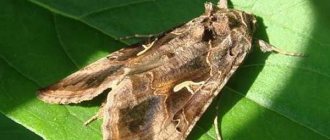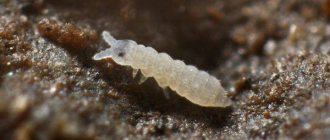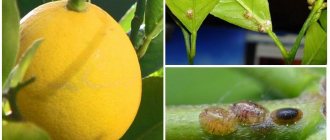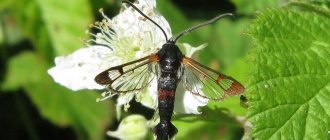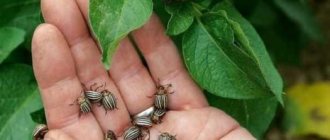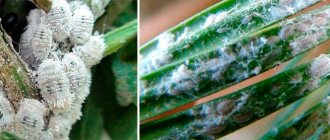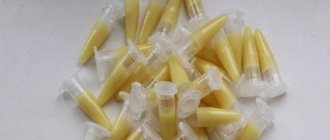Loading…
Loading…
Whitefly is the name given to a tiny, barely noticeable fly. What is the most effective way to get rid of whiteflies? After all, it causes irreparable damage to garden and indoor crops. The insect quickly produces offspring, which “eat” the crop with appetite in just a few weeks. It settles on young tomato and bell pepper seedlings. Loves to eat eggplant and cucumber leaves. It is found on plants that grow in greenhouses. What means of controlling whitefly exist? How to get rid of pests at home and in the garden? Before we get answers to the questions posed, let’s take a closer look at this cute “monster” that upsets people with its presence.
Why is whitefly dangerous?
At some point, the whitefly reveals itself, starting to fly in the greenhouse, conservatory or over the beds in the warm season. The insect prefers comfort and warmth, so it even settles on indoor plants. The butterfly grows up to 3 mm, has transparent wings with a powdery coating.
The life cycle of a whitefly follows the following pattern: egg - larva - butterfly. An adult can camouflage itself under the leaves of plants, feeding on its sap. The insect lays its eggs on the surface of the leaves so that they warm up in the sun and quickly turn into larvae. The larvae's journey through the plant ends with them sucking out the sap and the greenery begins to wither.
One female lays thousands of eggs per season, from which 15 generations of whiteflies emerge. Their danger to the site increases as adult females can fly and expand the population over large areas.
Whitefly - fighting it in open ground
If there is a whitefly in the open ground, it is easy to identify - it is a small insect with yellowish-white wings, similar to a moth. The pest grows up to 1.5 mm in length, it is located in the lower part of the leaves, the population grows very quickly. If you touch the affected plant, a whole cloud of insects scatters from it. On the inside of the leaf, the parasite leaves larvae - greenish oval capsules. Damaged plants gradually become covered with whitish dew - this is the result of the activity of pests.
Why is whitefly dangerous?
The harm caused by whiteflies is great; it can lead to the death of plants:
- The pest becomes saturated with plant juice, and yellowish spots appear on the affected leaves. The decorative value of the crop is reduced; if the damage is severe, the leaves turn pale and dry out, and the shoots become deformed. The plant's photosynthesis is disrupted - it lacks nutrients, the crop lags in growth, and may even die.
- The consumption of sap exceeds the needs of whiteflies, so they secrete sap, which settles on the leaves in the form of dew. Sooty fungus may subsequently develop on this plaque - the leaf begins to stick and becomes covered with a black layer, and the plant may develop necrosis.
- Whiteflies can carry viral infections throughout the plantation, causing yellow mosaics, leaf curl, and chlorosis.
How to detect a pest?
Plants in greenhouses and outdoor garden beds should be inspected periodically. The whitefly places brown eggs in a visible place. Although they are too small, there are thousands of them, so the foreign body is quite noticeable. You can remove them manually.
With the appearance of the larvae, the danger becomes widespread. Small larvae crawl throughout the green part of the plant and cannot simply be crushed. To detect flying individuals, you need to shake the plant. White moths take off, revealing their hiding place.
You can detect the whitefly population by the condition of the plant:
· Leaves begin to fade;
· Vegetation stops;
· The beautiful decorative appearance disappears;
· Leaves curl, turn yellow and fall off.
If you do not stop the proliferation of the pest in a timely manner, you can lose crops and ornamental plants.
Fighting a butterfly in a greenhouse
To protect plants in a greenhouse, you need to carry out a number of comprehensive preventive measures. Preventive measures that are applied if the pest is not detected:
- disinfection treatment, which is carried out every year after the crop is harvested;
- purchasing healthy seedlings and seeds;
- removal of weeds on which larvae are often found.
It does not survive in the open in winter. And it often penetrates the greenhouse with seedlings and soil. The greenhouse species may also settle on weeds, such as gooseberry or nettle.
If you do not destroy plant remains in the fall and do not disinfect the greenhouse, then you will not be able to protect the future harvest from this pest.
Freezing a greenhouse in winter
To prevent whitefly infection, you can also use methods of freezing the greenhouse in winter. If you keep the greenhouse open for a couple of days at 12 degrees below zero, it will die. These remedies are the most effective.
Mechanical methods
Control of flying pests in a greenhouse can be effective if mechanical methods are used:
- catching adult specimens using polyethylene coated with glue. It is necessary to use glue that does not dry out, and it is better to use yellow polyethylene. It needs to be hung in the greenhouse at a height of 10 cm above the beds;
- catching insects with a vacuum cleaner;
- treatment in a greenhouse with green soap.
Biological methods
Encarzia
There are also biological ways to combat flying insects in greenhouse conditions. Three parasites are needed per m2.
Natural enemy – encarsia
Female encarsia lay eggs in whitefly larvae and feed on their tissue, killing them.
- If you find a whitefly in the greenhouse, then you need to release encarsia pupae 14 days before planting.
- The effect of this method is 98% and it quickly pays off. This method of protection against pests living on tomatoes is especially effective.
It is not destroyed on cucumbers by this method, since the hairs that cover the plant interfere with the contact of encarsia with pest larvae.
Macrolophus bugs
Small butterflies on tomatoes and peppers growing in a greenhouse can be controlled with the help of macrolophus bugs.
- You need to release five bed bugs twice per m2;
- The period between the release of bedbugs is two weeks.
Chemicals
There are ways to destroy whiteflies by spraying plants with chemical solutions.
Many of them ensure the destruction of adult specimens by 90%.
Hormonal agents
There are also hormonal remedies for pests in the greenhouse:
- Admiral,
- Match.
Their action is aimed at eggs and larvae, and insects do not die from them.
Where does the whitefly settle?
The white moth and its larvae are not at all picky. They enjoy the greenery of 300 species of shrubs and herbaceous plants. Favorable conditions for whitefly reproduction are:
· Humid environment;
· Increased air temperature;
· No drafts or strong winds.
That is why greenhouses become the habitat of the pest. Moths are bred in greenhouses and on indoor plants. Therefore, it is necessary to maintain ventilation in enclosed spaces to prevent the appearance of moths.
In vegetable beds, eggplants, cabbage, potatoes, parsley, and melons suffer from whiteflies. If these crops are not present on the site, the pest quickly establishes itself in flower beds, sucking the juice from aster, balsam, begonia, cornflowers, etc. Even repellent plants are not afraid of the whitefly: mint, lemon, sage. It settles on apple trees, pears, and gooseberries. Rose lovers should take care to protect their rose garden the first time powdery white moths flutter through the area.
To maintain their population, whiteflies carefully hide their eggs for the winter in greenhouses, greenhouses, and greenhouses. Layed eggs can withstand temperatures down to -100 C.
How to get rid of whiteflies in the garden, greenhouse and at home
The well-known saying: “In war, all means are fair” shows how important it is to use different approaches in the fight against the enemy. Of particular importance is understanding why the conflict began. Likewise, knowing the reasons why the pest “settles” on vegetable crops helps prevent the problem.
Here are some conditions:
- uncontrolled watering;
- high level of humidity;
- air temperature above 30°C;
- densely planted crops;
- lack of ventilation indoors.
In addition, whiteflies easily enter a greenhouse, conservatory or home through open windows and doors. In view of this, it is wise to regularly check the plants to check whether uninvited guests have appeared on them.
The presence of moths is indicated by factors:
- whitish coating of sticky consistency;
- translucent scales on the back of the leaf blades;
- inhibited cultural growth;
- dark spots on leaves and shoots;
- lack of fruits.
In addition, the insidious insect is a carrier of fungal diseases, which lead to the rapid death of plants. If signs are detected, summer residents engage in “hand-to-hand” war with pests. First, let's look at how to fight whiteflies in the garden and save the expected harvest. The most effective means of destroying the “enemy” are chemicals. They are freely sold in specialized stores and are harmless to people.
Aktara
The substance destroys absolutely all pests that have settled on the crop. Those who managed to hide even under leaves or on stems fail to survive. According to the instructions, the drug acts on whiteflies in any weather. Its components penetrate into the foliage and shoots. It is important to spray Aktara near the root area of the crop.
The substance begins to act on butterflies approximately 35-40 minutes after treating the plants.
Fitoverm
The biological substance is based on a fungus from the Streptomyces family. When the whitefly is fed with poisoned elements of greenery, paralysis of the vital systems of the body occurs. She refuses to eat and eventually dies of hunger. The drug also destroys other insect pests.
After spraying the crop, the whitefly dies after 6 days.
How to get rid of whiteflies using the drug Iskra
The chemical actively affects the moth, causing paralysis. After applying the substance, a thin film forms on the sheet plates. The insect gets enough of its favorite treat and dies.
The drug is released in the form:
- powder;
- tablets;
- liquids.
The product is prepared according to the instructions provided. When processing plants in the garden, wear protective clothing, a respirator and gloves.
Agravertine
Usually the substance is used on a warm, windless day. It does not penetrate inside the leaf plates, but quickly affects pests. After a “hearty meal” the insect stops moving, which leads to death. Its numerous “troops” will disappear forever from vegetable crops in about 5 days. If the question arises of how to deal with greenhouse whitefly, then Agravertin will cope with this problem. The main thing is to adhere to the rules for preparing the drug specified by the manufacturer. And also, do not neglect safety precautions.
Confidor
The low-toxic drug destroys pests that suck the juice from the shoots and gnaw on the leaf blades. It is produced in the form of granules. To treat affected crops, they are dissolved in water at the rate of 1-2 pieces per 10 liters of liquid. "Confidor" begins to act after 60 minutes and maintains a protective effect for 30 days. The butterfly dies literally the next day.
The product has a detrimental effect on bees, so it is used in remote areas.
Preventive measures
It is better to prevent the appearance of a sucking pest on the site than to fight it. Agrotechnical measures give their results, so it is necessary:
1) Thoroughly ventilate the premises where greens are grown;
2) Maintain an acceptable distance between plants during planting;
3) Maintain a moderate level of humidity in enclosed spaces;
4) Do not foliar feed plants at low temperatures and high humidity;
5) Treat plants with growth stimulants and apply fertilizing.
Preventive measures do not always stop the reproduction of whiteflies. The next step will be the selection of means to combat the intrusive pest.
Types of whiteflies
More than 100 species of this parasite are known, found in many regions. The greatest harm is caused by:
- Tobacco. Omnivore, even feeds on medicinal herbs. It is distinguished by the inclination of the butterfly's wings.
- Greenhouse or greenhouse. Prolific, resistant to poor conditions. The body of an adult is yellow.
- Citrus. The butterfly has an icon that looks like a Y.
- Mulberry. The larvae are black with white fringe. Common on citrus fruits.
- Cabbage. In its absence, it develops other vegetable beds.
- Bordered. Settles on cotton and melon crops. It is distinguished by a gray body and black stripes on the wings.
- Strawberry. Prefers berry plants (strawberries, raspberries, etc.).
- Gigantic. The largest butterfly is up to 5 mm. Found on roses, tomatoes, trees and ornamental shrubs.
- Honeysuckle. The front wings are speckled. Settles on grapes.
- Iris. He also prefers gladioli. Switches to other flowers when they are absent.
- Ashy. The caterpillar has a fine fringe on its body with wax droplets at the ends. Harmful to trees and shrubs.
- Crowned. The larva is black with a waxy crown at the head. Lives in oak forests and chestnut groves.
How to fight whitefly?
There are different methods to stop the invasion of all-consuming moths on green spaces. At the first stage, gardeners and gardeners use mechanical methods and folk remedies:
1) Traps are made for flying individuals, which consist of a solid base (cardboard, plastic) with a sticky layer of glue, Vaseline, honey with rosin, castor oil applied. The base is painted bright yellow to attract moths. A piece of solid base is hung in the greenhouse or attached to sticks in open beds. The principle of operation is simple: butterflies fly towards a bright color and stick their paws and wings to the adhesive base.
2) Fumigators are used, into which a liquid is poured that drives away whiteflies with the aroma. The method is only suitable for rooms where there is electrical wiring.
3) Plants where the flying pest or its larvae appeared are washed with a solution of laundry or tar soap, infusion of garlic, yarrow, dandelion.
4) Popularly, an alcohol extract of Pyrethrum (a special type of chamomile called Dalmatian, Caucasian or Persian) is considered a proven method. To prepare the tincture, take 25 g of crushed chamomile and add 100 g of alcohol. Leave the tincture overnight, tightly closed. 20 g of alcohol extract is diluted with a liter of water and an adhesive is added (5 g of laundry soap). Apply once a week to spray any crops where pests have appeared.
5) When a huge number of whiteflies appear, treat the area with chemicals. The radical method gives a positive effect. Insects disappear for a long time, but chemical elements enter the soil, water, and are absorbed into plants. By destroying whiteflies chemically, a person harms himself and the environment.
An alternative way to control whiteflies
To make the treatment of green spaces safe for human health, warm-blooded animals and beneficial insects, we suggest using Farmorganic brand products. Whiteflies will disappear from the area for a long time if you spray the plants with an effective solution of Dalmatian chamomile extract. Ready-made concentrated preparations contain natural pyrethrins, which are dangerous for whiteflies and their offspring. Treatment can be carried out indoors and even in living rooms. The targeted action of the drug does not harm humans. The harvest can be harvested the next day, but without annoying moths. Pyrethrum preparations have a contact-intestinal effect, so moths hidden under leaves have no chance of survival. If droplets of the insecticidal solution do not fall on the insect’s body, the whitefly will “dine” on the juice of the plant, which contains pyrethrins. Death will occur through complete immobilization and inability to eat.
An organic insecticide made from Dalmatian chamomile cleans the garden and vegetable garden of whiteflies for the entire season. The new method has been tested in practice and approved by leading experts!
Return to list
Chemical remedies
All potent drugs must be used strictly according to the instructions. Gardeners highlight in their reviews such means of protection against aphids and whiteflies as:
- Zeta,
- Rovikurt,
- INTA-VIR,
- Fufanol,
- Karbofos
- Phytofarm.
It is worth adding a little laundry soap to all aqueous solutions of these effective drugs so that the active substance remains on the leaves and stems of plants longer.
Instead of soap, you can use detergents, the main thing is that the spray solution sticks to the leaves and stems. Summer residents use green soap.
Separately, it is worth mentioning such chemical preparations as Aktelik, Aktara, Confidor, Commander and Tanrek. They cannot be used in greenhouses or greenhouses. They are designed for use on open ground. The fumes from these drugs have a negative effect on people.
Mechanical methods of control
Attention should be paid to traps and fumigators. They take a long time to apply, but are effective in controlling adult insects.
Traps and fumigators
Insect traps will help destroy the annoying butterfly. The most famous, ARGUS. Their design: a sheet of thick cardboard or plastic, which is covered with an adhesive layer. The glue applied to the base does not smell, it is colorless and non-toxic. The devices themselves are painted yellow. This is the color that attracts the parasite. The moth sticks on light contact with the glue and remains trapped.
In addition, such designs are recommended for use with other insects, for example, aphids or thrips. With their help you can protect plants from adult insects. Thus, after a certain period of time, the pest can be completely eliminated. You can make traps yourself. To do this, you need to cut a piece out of cardboard, cover it with yellow paint, and apply a mixture of Vaseline, honey and castor oil.
If you don't have cardboard, you can make a trap out of plywood or hardboard. Hang the structure on a holder and place it in a container with an infected flower. The boxes of factory traps have special wire fasteners, with their help you can install the leaf above the plant.
When fighting insects in a greenhouse, one trap is placed per ten square meters of area. In an apartment, one design on the windowsill is enough. But for all their advantages, traps also have a significant drawback. Butterflies and bees stick to them, so they should be removed after the whitefly is killed.
Popular: Causes of rust on leaves and methods of control
Fumigators
You can reduce the number of insects using fumigators that protect against blood-sucking parasites. The fumigator is plugged into an outlet next to the infected flowers. Indoors, windows and doors should be closed. To avoid poisoning yourself or your pets, you should not be in the room. Butterflies die from toxic chemical fumes.
Another mechanical way to kill parasites is to manually collect infected leaves or wash off the whiteflies with water and dissolved soap. This method should be used when one or two flowers are infected. It is not suitable for use over large areas or in greenhouses.
Traditional recipes for pests
Folk remedies work well to destroy the pest when the plant has just become infected. To reduce the number of larvae, you need to wipe the leaves of the flower with a solution of soap diluted in it. Using a sponge, carefully remove the larvae from the leaves. This flushing is best done when few plants are infected.
Another way would be to lower the room temperature to ten degrees. Adults cannot survive in this temperature regime. But lowering the temperature is not always effective in killing butterfly larvae and eggs. They can hibernate, and when the temperature rises, they begin to act again.
Spraying
To prepare such a mixture, you need to rub a piece of laundry or tar soap and dissolve it in a ratio of one part of shavings to six parts of water. The mixture should be whipped into foam. They are smeared on plants or sprayed on flowers from a spray bottle. You can apply a little solution to the soil so that the mixture does not penetrate into the deep layers of the substrate. One treatment can destroy almost the entire pest. To consolidate the result, it should be repeated after a week.
To prepare another solution, you need to take a couple of cloves of garlic, chop or grate them and pour a liter jar of boiling water. The solution is infused for 24 hours, then strained and you can spray flowers with it. Course of treatment: three sprays at weekly intervals.
A similar treatment is possible if you replace the garlic with 90 grams of crushed yarrow. Only this solution is infused for 48 hours. The processing scheme is the same as with garlic infusion.
You need to spray the flower against whiteflies with brewed tobacco infusion. To do this, a pack of cigarettes should be gutted and poured with a liter of boiling water. The mixture should be infused for five days in a dark place, then the mixture is strained. Spraying is done at intervals of three days.
Chemical methods
If there is a large distribution of butterflies, larvae, eggs on an infected plant or if there is a large area affected by the pest, traditional methods and traps may be ineffective. In this case, gardeners recommend using chemicals designed to eliminate the pest.
Popular: Measures to combat powdery mildew on roses
The insecticide "Aktara" is considered reliable. It can be used to treat the substrate and spray parts of the plant. It is possible to use Aktara with Aktelik. At home, they also use a whitefly remedy called Tanrek. After spraying, the effect lasts about a month. Even when the room temperature rises, the whitefly does not reproduce.
According to reviews, Fitoverm is considered an effective remedy. It is non-toxic and safe for indoor plants and the gardener himself. Before processing the flower, add a little soap solution or shampoo to the mixture. This will ensure better adhesion to the sheet surface.
Another effective insecticide that is often used by gardeners is called Confidor. An hour and a half after treatment, the whitefly begins to die. They should not treat plants multiple times. Only one impact is enough. It contains imidacloprid. It is the basis of several drugs, for example, Marathon, Admir. This series of drugs is interchangeable.
How to distinguish whiteflies from other pests
The whitefly can be easily recognized by its structure, characteristic conditions and habitat. Its dimensions do not exceed 2 mm, the wings are covered with white pollen, similar to flour, the body is yellow with a black pattern.
A favorable condition for the existence of this pest is high humidity at high air temperatures. Such conditions are created during hot summers with frequent warm rains or in greenhouses with poor ventilation. Open spaces, strong winds, and air temperatures below +10°C are considered destructive for adult individuals.
The insect is extremely prolific - each adult is capable of laying up to 140 eggs during its life. The life cycle of the pest is 30 days. The insect lays eggs on the hidden side of the leaf. Soon voracious larvae emerge from the eggs. The maturation period for eggs, depending on conditions, can be 7-13 days.
Both adult pests and their larvae feed on the juices and green pulp of plants. Before turning into a butterfly, the larvae are covered with a protective waxy coating. During this period, they are difficult to destroy in any way.
Preventive actions
To prevent the appearance of a dangerous pest on your site, it is necessary to carry out preventive measures:
- purchase high-quality planting material;
- apply quarantine to plants before planting;
- correctly distribute the plants in the garden bed, ensuring good ventilation;
- avoid waterlogging of the soil;
- strengthen seedlings with biostimulants;
- carry out deep digging of the soil in the fall;
- sprinkle the soil with wood ash, etc.
In the spring, you can cover beds with young seedlings of plants favored by whiteflies with a fine mesh or light covering material.
Only by using comprehensive control and prevention measures can you cope with a dangerous pest and preserve your harvest.
Rate this article:
Chemicals
The use of chemical insecticides is a radical method of control, as they allow you to get rid of the pest very quickly. Treated plants absorb the active ingredients of the drug and become poisonous to whiteflies. And when the parasite drinks the poisoned juice, it is guaranteed to die, and literally within a few hours.
On a note! Here you should take into account the fact that all ready-made insecticides act only on adults and larvae, and they are not able to affect whitefly eggs. For this reason, after 7-10 days the treatment is repeated to destroy newly hatched insects!
So, to combat whiteflies in the garden, we can recommend the following chemicals.
- "Actellik" is an organic drug with an intestinal effect. Penetrates the insect's body and leads to its immediate death. Contains fluoride additives. It belongs to the second class of danger, and therefore is included in the list of hazardous substances - it is highly not recommended to use it during flowering, since it will destroy bees along with whiteflies.
- “Rovikurt” works well against both whiteflies and other garden and garden pests. Recommended for the protection of vegetable crops, indoor plants and garden trees. Treatment with Rovikurt is carried out exclusively during the active growth phase and no later than 30 days before harvesting.
- "Aktara" is a systemic drug with a prolonged effect. Provides protection of plantings for 3-5 weeks. The treatment is carried out as follows: the working solution is injected under the root of each plant. If the number of parasites is large, the crop is sprayed in parallel - it is advisable to do this three times with two week breaks.
- "Akarin" or "Agravertin" is an insecticide with enteric contact action. Using this drug you can destroy not only whiteflies, but also spider mites. The working solution should be generously sprayed onto the infected plants, paying special attention to the lower surfaces of the leaves, where the parasites usually sit.
- "Fitoverm" - this product works well against almost all garden and garden pests, including whiteflies. Treatment with this product must be carried out twice, no more. It is a 4th generation biological product, has a fairly wide spectrum of action and quickly breaks down in the ground without polluting the environment.
- “Confidor” is an insecticide with a low consumption rate and a long period of action, and the pest will begin to die within an hour and a half after treatment. Recommended for use on vegetables and fruit trees. Works great even in adverse weather conditions: it is not washed off by rain and continues to be highly effective in hot weather.
- “Iskra” is a whitefly remedy based on imidacloprid, characterized by high efficiency. Provides long-term protection - about 25 days, and therefore often allows you to get rid of all pests in one application.
Features of insecticides
- Any chemicals should be used strictly according to the instructions, otherwise there is a risk of harming your own health.
- It should be remembered that the active ingredients of insecticides can accumulate in plant tissues and directly in fruits.
- When processing crops in closed ground conditions, it is highly not recommended to work for more than 2 hours. Children and animals should be prohibited from entering treated greenhouses.
- During spraying and watering, it is necessary to avoid the entry of toxic substances into open and closed water sources.
- Prepare a working solution and use it for its intended purpose, preferably wearing personal protective equipment. If a chemical is accidentally ingested, or if it comes into contact with mucous membranes, you should immediately seek medical help.
Where to find whitefly
A butterfly can be seen simply flying over a flower or plant. In appearance it resembles a white moth. If you suspect it, shake the plant. If there is a whitefly on it, then the pest will immediately flutter and at least a dozen insects will be found flying into the air. In addition, the parasite can be detected by turning over the lower leaves.
Popular: Methods for treating indoor roses from pests
There will be a large number of scales there. These are butterfly larvae. There are also sticky clots of sweet honeydew on the leaves. This is the butterfly's waste product. After this, a sooty fungus begins to develop on the leaves of the plant. Dark spots form on the surface of the crops and the flower stops growing. Its foliage begins to turn yellow and curl.
The best conditions for the development of butterflies on flowers are wet summers. The temperature at this time is quite high, and the air is saturated with moisture.
If the temperature drops below ten degrees, the pest dies, but the eggs continue to develop. Therefore, when the temperature becomes low, the moth prefers to move to greenhouses and greenhouses with poor air flow.
Therefore, it is not recommended to plant plants in beds in greenhouses too close; they are often ventilated. There is no need to spray them at humid temperatures. Strengthening the health of crops occurs by enriching the soil with biostimulants.
Advantages and disadvantages of chemicals
Advantages:
- Large selection of pest control products on the market;
- Have a prolonged action;
- Effectively destroy whiteflies and other harmful insects;
- Some chemicals contain substances that stimulate plant growth.
Flaws:
- High cost of certain chemicals;
- Some insecticides tend to accumulate in the soil and fruits;
- Some drugs pose a threat to humans, animals and beneficial insects.
How and when to treat the area?
The area must be treated at a certain time. This way the effect will be higher, and the whitefly will disappear from the area faster.
On vegetable crops
If an insect appears on vegetable crops, you first need to use folk recipes, and only then use chemicals. This will protect the flowers and stems of the bushes from harmful substances entering the plant. It is best to spray vegetables, but you can also water the soil with the solution.
You need to use control methods on a quiet day that does not predict precipitation or strong winds. Also, do not spray plants with chemicals on a hot day, as burns may occur on the leaves. Treatment should be carried out at the moment the whiteflies appear, without waiting for their reproduction.
On flowers
Flowers should not be treated with chemicals that are absorbed into the plant, as the flower may wither. It is best to process flower stalks when flowers have not yet begun to form on them. At the same time, whiteflies should not be allowed to reproduce.
Flowers also need to be sprayed with solutions or watered the soil around them.
On bushes and trees
Trees and bushes, due to their large size, are recommended to be pollinated with chemicals. They will destroy harmful insects that have hidden under the bark or in other hard-to-reach places. You need to spray the plant before flowers or fruits appear on it.
Effective means to destroy whitefly on fruit trees

